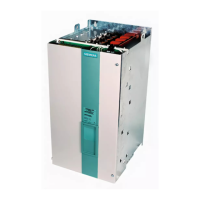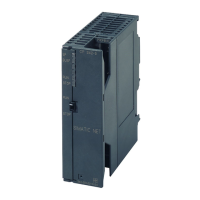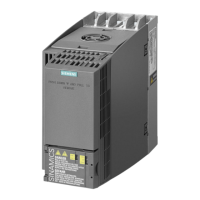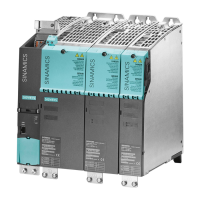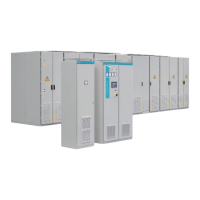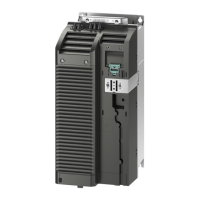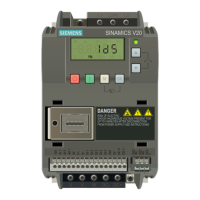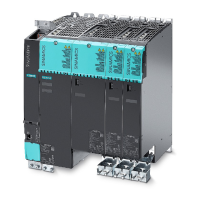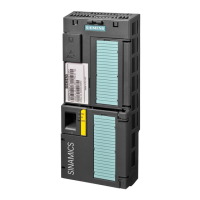Communication / USS 02.2004
6SE7087-6QX70 (Version AD) Siemens AG
8.1-8 Compendium Motion Control SIMOVERT MASTERDRIVES
The two ends of a bus line (first node and last node) must be
terminated with bus terminating networks.
Point-to-point connections are handled just like bus connections. One
node has the master function and the other has the slave function.
Data is transferred in accordance with Standard EIA 485. RS 232 can
be used for point-to-point links. Data transfer is always half-duplex −
i.e. alternating between transmitting and receiving − and it must be
controlled by the software. The half-duplex technique allows the same
cables to be used for both data-transfer directions. This permits simple
and inexpensive bus cabling, operation in environments subject to
interference and a high data transfer rate.
A shielded, twisted two-wire cable is used as the bus cable.
Conductor diameter ∅ 2 × ≈ 0,5 mm
2
Conductor ≥ 16 x ≤ 0,2 mm
Lay ratio ≥ 20 twists / m
Overall shield
Braided, tin-plated copper wire, diameter
∅ ≥ 1,1 mm
2
85 % optical coverage
Overall diameter∅ ≥ 5 mm
External sheath
Depending on the requirements regarding flame
retardation, deposits after burning etc.
Table 8.1-2 Structural data
All information should only be considered as a recommendation.
Deviations or different measures may be required depending on the
particular requirements, the specific application and the conditions on
site.
Cable resistance (20°C) ≤ 40 Ω/km
Insulation resistance (20°C) ≥ 200 MΩ/km
Operating voltage (20°C) ≥ 300 V
Test voltage (20°C) ≥ 1500 V
Temperature range -40 °C ≤ T ≥ 80 °C
Load capability ≥ 5 A
Capacitance ≤ 120 pF/m
Table 8.1-3 Thermal and electrical characteristics
Data transfer
technology
Cable
characteristics
NOTE
Thermal and
electrical
characteristics

